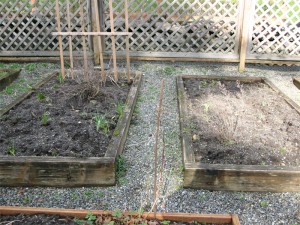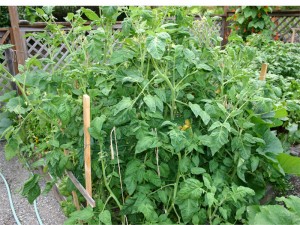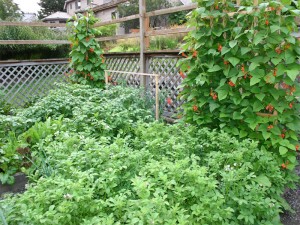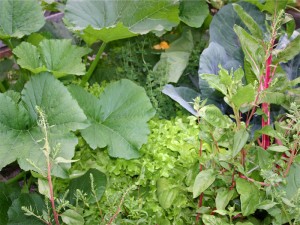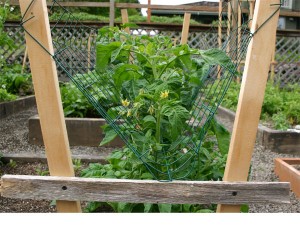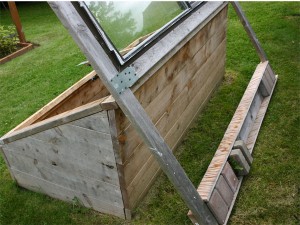I’ve had a couple questions about this, so I must not have outlined my thinking regarding ORMUS (Orbitally Rearranged Monatomic elements (ORMUS was derived from ORMES)) as fertilizer clear enough in my previous posting ORMUS as Fertilizer. It may just be a theory, but if it holds up, there should be some clearly measurable results when it’s used.
The idea is this – because molecules that use minerals require angstrom size (single atom) minerals, creating an environment rich in angstrom size minerals would enable the plants to work more efficiently. Likewise, if the soil is rich in angstrom size magnesium atoms, the plant should be able to create more chlorophyll molecules that will allow it to capture more sunlight (energy) that will enable it to produce more. The extra utilization of sunlight should produce sweeter and healthier plants. Ultimately, in the end, the production should be larger.
At least, that’s the basic idea.
In order to understand this better, all you need to do is look at what’s in our seawater. Or, in my case, look at what there is in Dead Sea salt. The back of the Bokek Dead Sea Salt bag reads
The composition of the brines is distinct, comprised mainly of magnesium, potassium and calcium chlorides, as well as a high level of bromides, …
And what we see from the previous posting, it’s nearly 33% Magnesium Chloride and 24% Potassium Chloride. Better yet, let’s look up the Dead Sea and see what Wikipedia states:
The mineral content of the Dead Sea is very different from that of ocean water. The exact composition of the Dead Sea water varies mainly with season, depth and temperature. In the early 1980s, the concentration of ionic species (in g/kg) of Dead Sea surface water was Cl− (181.4), Br− (4.2), SO42− (0.4), HCO3− (0.2), Ca2+ (14.1), Na+ (32.5), K+ (6.2) and Mg2+ (35.2). The total salinity was 276 g/kg.[10] These results show that the composition of the salt, as anhydrous chlorides on a weight percentage basis, was calcium chloride (CaCl2) 14.4%, potassium chloride (KCl) 4.4%, magnesium chloride (MgCl2) 50.8% and sodium chloride (common salt, NaCl) 30.4%. In comparison, the salt in the water of most oceans and seas is approximately 97% sodium chloride. The concentration of sulfate ions (SO42−) is very low, and the concentration of bromide ions (Br−) is the highest of all waters on Earth.
If you follow the links for Calcium Chloride, Potassium Chloride and Magnesium Chloride, you’ll find that the molecules are water soluble. But it’s not just these minerals that are water soluble. It turns out that just about every other mineral ends up in sea water in trace amounts. Here is a link to 80 Elements dicovered in Sea Water (sic) on curezone.com. These minerals are most likely also in their ionic state – a single angstrom size atom suspended in water.
Now, where do these angstrom size atoms go when the H20 is evaporated off the top? Well, they form ‘salts’. As seen above, they are versions of chloride. But that is for the minerals that have extra electrons to share. Calcium has two, potassium has one and magnesium has two. But the beauty is that when added to water the extra hydrogen and oxygen atoms allow the dry chlorides to separate into individual minerals.
Now here is where water works to our advantage. Water molecules are ‘V’ shaped giving each molecule a slight positive and negative charge; like a little magnet. The chloride salts are formed through the sharing of electrons to create stable molecules (when dry) that when added to water split leaving charged atoms floating around in solution. In other words, the water holds the single atom of magnesium in solution because the magnesium has a charge – it’s attracted to the little magnets. What we want to do is bond that atom with something that is not harmful to the plant and also remove the chloride.
This is where the process of making ORMUS precipitate comes in. To make this precipitate, you add highly mineralized salts to water, which breaks the chloride-mineral bond and then add sodium hydroxide. Sodium hydroxide also dissolves in water creating a surplus of hydrogen atoms. When this happens, the hydrogen atoms have an affinity to combine with the minerals floating in solution. When they do, it stabilizes the ionic charge of the molecule and it can no longer be held in solution. The stable mineral Magnesium Hydroxide precipitates out of solution (as do the other minerals).
After the hydroxides settle out, you’re left with a really salty solution compromised mainly of sodium, chloride and water (you can see precipitate in the picture on one of my previous posts). At this point, you rinse the water off while being careful to keep the precipitate.
In the end, you’ve removed the chloride that you don’t want to give (in high concentrations) to the plants. Yet you keep mineral combinations that are highly absorbable and required by the plants for life.
After all this, you might ask – why go through all this trouble when you can just add standard fertilizer to your garden? The reason is that you want to add a balance of minerals in a form that can quickly be used – without side effects. When you add mined sources of minerals that have strong mineral bonds, the plants have a hard time digesting what they need out of the soil. They quite often only need one mineral from a combination and thus the other is left in the soil which has to be dealt with. Some fertilizers will change the pH over time and have to be neutralized with another mineral compound. This should not happen with ORMUS because the amounts are small and the key acid mineral (chloride) is placed on in minimal amounts.
In any case, it should be pretty easy to mix up a batch or two to water the garden with. And, if it works, I’d expect to see changes (or differences) between the fertilized and non-fertilized plants fairly quickly. The first thing I’ll be looking for will be leaf size. I’ll keep everyone posted as spring arrives!
Previous Posts

